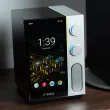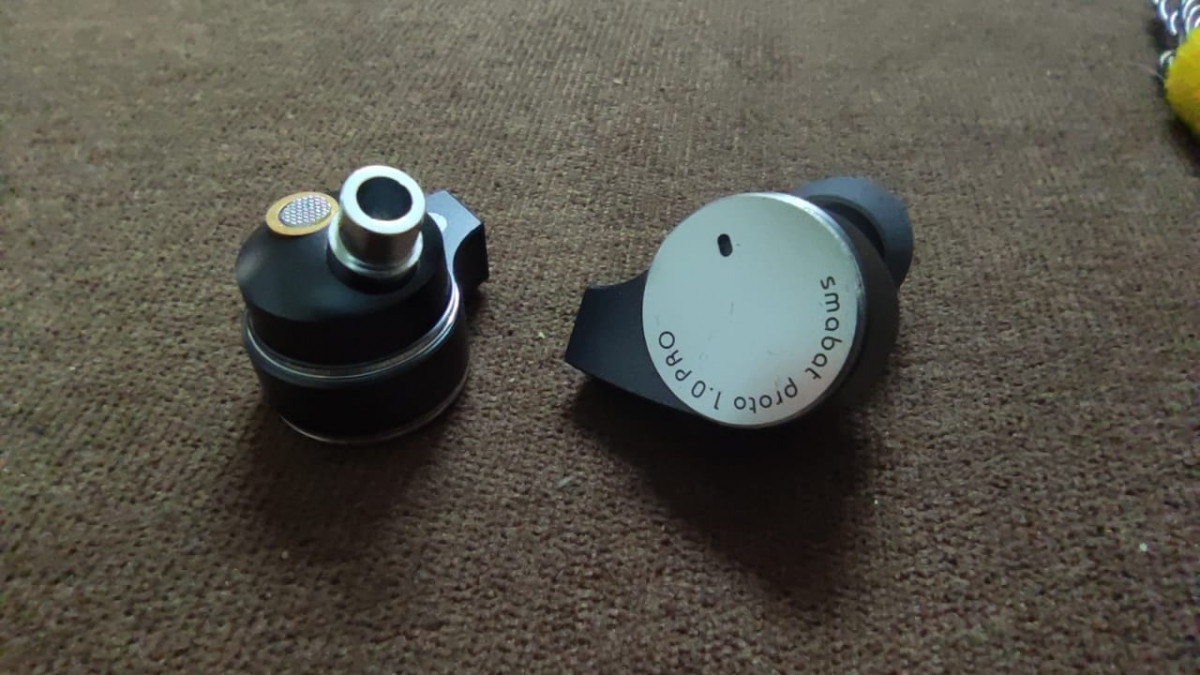Intro
The little, smart bat, Smabat, whatever you want to call it, is already a well established audio company from China that has been pushing out revolutionary audio products ever since their debut back in 2018 with their ST10 earbuds with their unique maze acoustic cavity that showcased their ingenuity and passion. Since then, they have been very keen in search of new innovations and designs that excite the users’ ears while keeping a high degree of sound and build quality. Recently, they have released the M0 and M2S Pro earbuds that is the first modular design in an earbud that lets you change the dampers and the drivers of the earbuds for a wider selection of sound profile to suit your taste. Smabat has now taken this great idea and implemented it in a form of earphones thus producing a world first fully modular earphone, the Smabat Proto 1.0. Ever since they have announced the release of the Proto 1.0, I have been stoked to get a pair to try it out myself and the day has come as the Proto 1.0 just arrived fresh from their factory along with a pair of LCP diaphragm drivers that has been bought seperately. How will it perform and will the tunings they offer work? We shall find out in this review.
Functions & Specifications
Before we start the review, here are the specifications of the Smabat Proto 1.0;
- Product name: Smabat Proto 1.0
- Impedance: 16Ω
- Earphone sensitivity: 110dB/mW
- Frequency range: 10-22000 Hz
- Total harmonic distortion: <0.2%@ 1KHz
- Plug interface: 3.5mm
- Cable length: 1.2m±2cm
- Color: gray
- Headphone plug type: L-shaped
- Headphone jack: MMCX jacks
- Stock Drive unit: 10mm Titanium Diaphragm drive
- Flagship Drive unit: Dome LCP diaphragm 22Ω
The Smabat Proto 1.0 can be purchased at Smabat aliexpress official store :
The Proto 1.0 drivers :
Packaging & Accessories
Smabat packaging of the Proto 1.0 is compact and includes all the basics needed in a small form factor packaging that is similar to the M0 and M2S Pro earbuds. Inside we will find the earphone unit itself, a MMCX cable, 3 pairs of eartips, a small tweezer for filter removal, a Smabat pouch, a pair or treble tuning filters and 3 pairs of bass tuning filters with 1 pair of medium filters already installed in the earphones. The packaging is just basic and for the price paid it is a little too simple as competition is tough nowadays in this price segment. An addition of a better hard case would be nice but what I really care about is how they perform in their sound quality and the product quality itself.

Design
The design of the Proto 1.0 is truly unique and it looks quite different from the conventional earphones in the market. It houses a MMCX shell earphone with a removable faceplate for easy access to the drivers and the bass tuning parts. It can be used over the ear or can be worn straight down as well by reversing the left and right side of the earphones. Comfort on these earphones is great but the sharp edges of the tuning filter does not fit in flush but rather on a weird angle making insertion sometimes feels uncomfortable. I fixed this problem by inserting the filters backwards through the inside of the shell and I do not feel any sound changes by using the filters this way. The nozzle of the Proto 1.0 has an adequate length but what’s missing is a ridge to hold the eartips in place so tips with big diameter bore might have issues as they may slip out quite easily.



The Proto 1.0 comes with 3 types of bass adjustment where the red ones have the strongest bass, gold ones are the medium and the silver ones have the least bass. By experimenting with them I really do feel that they make a significant difference as the red ones really make the bass bigger in quantity and have a harder slam without any bleed into other frequencies. The gold ones are my favourite as they do not alter the bass quantity and sounded more natural to my ears while still possessing a great thump in the bass region. The silver ones make the bass a little thinner and make the other frequencies more present in the presentation. Included in the Proto 1.0 is a treble reducing filter to fix on the tip of the nozzle to reduce the treble for those treble sensitive users. I prefer not to use these filters as it does make the treble a little recessed. The bass and treble filter has different sizes and cant be mixed. Overall, I am truly impressed with these filters and the changes they made without any distortion or sacrificing the original sound of the driver.


Cable included is a 4 core twisted cable in grey colour. It felt great as it feels solid with metal plugs while being soft and pliable to be used comfortably. The Y-splitter is also made of solid metal and it does have a plastic chin slider. It sounded great and had a hint of brightness to it when I used it on other earphones. Thumbs up for the cable included.

Gears Used for Comparisons
- FiiO M11Plus LTD
- RHA L1 Dacamp
- Hidizs S9 Pro
- Beyerdynamics Xelento
- Intime Kira
- Moondrop A8
- Tanchjim Tanya
- Tinhifi T2EVO
- Venture Electronics Bonus IE
- Blon A8 Prometheus
Songs list
Tone and Presentation
Smabat Proto 1.0 stock titanium dome drivers have a balanced sound signature with the bass and treble boosted slightly providing an energetic and warm sound signature. Clarity of the titanium driver is excellent with macro details presented in great realism. Micro detailing is average but they do have decent transparency. It is neither too slow or too fast sounding and has the right balance of being not too warm or too bright in my listening experience. Their sound field is quite wide with great extension on both the lows and highs. What’s great about this earphone is you can simply change the drivers if you are not satisfied with the sound signature. I will also include a short impression of the LCP drivers below.
Soundstage
Soundstage of the Proto 1.0 is fairly good and is above average for an in ear monitor. They sounded very airy and spacious compared to other earphones at this price range. Height of the sound produced is tall while the width is very wide making live performances sound very enjoyable. The headroom they produce is great and they do not sound boxy.
Separation and Timbre
The Proto 1.0 possesses a great separation and timbre as being true to a dynamic base driver. The sound produced is in great harmony and sounded very coherent if compared to a multi BA or hybrid driver IEM. Even on busy tracks, they managed to sound right without any congestion like on EDM or metal based tracks. Layering is great as well and they possess no veilness in their presentation on classical tracks.
Drivability
At 32ohms, the Proto 1.0 is easily driven on low powered sources such as smartphones or PC but they do scale up very well with better equipment. With a portable DAC/amplifier or a dedicated digital audio player they sounded more refined and had a more detailed sound. They are quite forgiving on poorly mastered tracks and are not picky with amplifier pairing as they sounded good on all my setup that I feed it with.
The Bass (Low)
Proto 1.0 bass is one of the main selling points of the product as they are tunable and they perform quite well in their quality also having a decent quantity. The bass sounded very deep with great extension giving it an airy bass reproduction. Sub-bass is very well present with heavy bass tracks like EDM and they are not congested nor having any bleed to the other frequencies. Clarity and details on the bass is average and they sounded quite loose at times. The bass is boomy and quite strong even on the gold medium filters but to satisfy bassheads, the red filters have the strongest bass response and the quantity does increase significantly. Overall the bass has a great quality and they sounded real meaty but they only have an average clarity to it on any of the 3 filters given.
The Mids
Midrange on the Proto 1.0 has a flat response tone. They are not overly forward nor too recessed in my listening experience and they have a great intimacy in their presentation and they are quite balanced without any dips or peaks in my listening experience. Details on the midrange are good with great transparency and they have some thickness to it’s presentation. Vocals perform quite well as male and female vocals sounded quite intimate with a great degree of resolution to it. They do not sound crisp but they are smooth to listen to without any hollowness present in their performance and they sounded clear without any veilness.
The Highs
The high range of the Proto 1.0 has a mild boost to their performance and they have a great presence in their presentation without sounding too piercing or harsh. They do not possess any sibilance and they sounded smoother after burning it extensively for a minimum of 50 hours. They are quite airy but lack crispness but they do have some sparkles in their presentation. Details in the treble are excellent with great detail retrieving capabilities. I do find the treble good without being too sharp or too shouty while having an energetic sound to it. Hissing is not present and they are quite smooth sounding overall with a great presence in their high range. Sibilance is only present with high volume of listening and If users were to find the treble too strong, they can install the treble reducing filter provided but I would rather not as I feel that the filter makes the treble a little recessed for my taste.
LCP drivers
I have also bought a pair of LCP(liquid crystal polymer) drivers separately and they are the most expensive drivers in their selection costing at USD19.95. They also do have a beryllium plated driver at USD15.20 and a fiber membrane driver at USD14.25 making this a very fun and wide sound selection set of earphones to play with. Replacing the drivers is easy and no soldering or special expertise needed to replace the drivers.
After replacing the drivers, I found that the LCP drivers sounded a step further up than the titanium dome stock drivers in their resolution and clarity. They sounded more crisp in their midrange and high section. It sounded slightly wider in their soundstage and they were very enjoyable.
In the bass department, bass quantity is slightly less than the stock drivers but they are compensated with a tighter and clearer bass response while retaining the sub-bass presence. Bass attack is faster than usual and with the red filters installed, the bass is simply awesome and punches way above the asking price of the earphones.
Midrange of the LCP drivers has a more forward approach to it and they have a slightly better resolution versus the stock driver. It has a crispier touch in their presentation and sounded faster than the stock driver.
High range of the LCP drivers has less quantity but has a better overall quality than the stock drivers. It is smoother overall and has the crispness added to their sparkle while sounding smoother than the stock drivers. Overall the amount of treble in the stock driver is more than the LCP drivers but the quality of treble on the LCP is better.
Comparisons
VS TinHifi T2 EVO
One of the latest earphones released by the TinHifi team that is super energetic and it has a mild V-shape to its sound signature. It is priced around 30% less than the Proto 1.0 but the Proto 1.0 has the ability to fine tune their earphones.
The High region on the T2 EVO has the better amount and presence. Treble on the T2 EVO is more energetic and can be fatiguing at high volume where the Proto 1.0 treble sounded smoother and less fatiguing. Both possess the same quality in their high region but the Proto 1.0 sounded more acceptable to users that are treble sensitive and they sounded more natural.
Midrange of the Proto 1.0 has a better presence than the T2 EVO slightly recessed midrange. Clarity on the Proto 1.0 is better and they also have a slight advantage in the resolution here.
Bass on both of the earphones has the same amount but the bass on Proto 1.0 sounded tighter and airier overall. Sub-bass presence is better on the Proto 1.0 and they sounded clearer versus the T2 EVO. Soundstage on the Proto 1.0 has the better width and height overall.

VS Blon A8 Prometheus
Both are similarly priced earphones while the one of the kind modular design of the proto 1.0 is unique, the A8 boasts an eye-catching design unique in its own way.
Highs on the Proto 1.0 has sharper presence while the A8 is leaner and slightly airier than the Proto 1.0. Attack on the treble of the A8 is better and it sounded more energetic. Details on the high region in the Proto 1.0 are better.
Mids on the A8 had a more forward approach to it and they sounded thicker. Resolution in the midrange of the Proto 1.0 is slightly better and they also sounded smoother overall. Accuracy in the midrange of the Proto 1.0 is better and they sounded more natural.
Bass on the A8 is tighter and they have a sharper slam versus the slightly loose bass of the Proto 1.0. Sub-bass on the Proto 1.0 has a better presence and it extends better than the A8. Bass on the Proto 1.0 sounded airier and has a bigger room effect than the rather closed sound of the A8.
Soundstage of the Proto 1.0 is slightly better in it’s width but sounded similar in their height.
VS HZ Sound Heart Mirror
The current favourite IEM from HZ Sound possesses a great technical neutral sound with jaw dropping clarity and details that will satisfy plenty of purist audiophiles. They cost half the asking price of the Proto 1.0 but lack the modular abilities.
Bass on the Proto 1.0 has the better quality and quantity but the bass on the Heart Mirror has better clarity. Bass on the Proto 1.0 has a better, thicker and deeper presence versus the thin bass response of the Heart Mirror. But on acoustics and instrumentals, the Heart Mirror has the edge for being clearer.
Midrange of the Heart Mirror has better transparency and detailness. The Proto 1.0 sounded thicker here and has the better emotional feel to it while the Heart Mirror sounded purer. Clarity on the Heart Mirror is better but it may sound thin especially on male vocals and the Proto 1.0 sounded better here.
High range on the Heart Mirror has the edge of being better in their quality but quantity of the high range is rather similar. Treble decay on the Heart Mirror is smoother and they sounded much more polished in their treble presentation.
Soundstage in the Proto is wider and slightly taller than the Heart Mirror
Synergy
FiiO M11Plus LTD
The latest of the M11 series equipped with a pair of now rare AKM4497eq DAC chips and a pair of THX amplifier modules. They sounded clean and warm and pairing of this M11Plus with the Proto 1.0 is great and I am impressed with the cleaner and thicker sound they gave to the Proto 1.0. Bass is slightly tighter and has better details in their presentation while the quantity remains almost the same. Midrange has a thicker velvety taste to it due to the AKM chips sound signature and they match the tone of the Proto 1.0 well. Highs is less harsh, less peaky and it sounded airier with great treble extension. Soundstage has a better holographic feel to it making it sounded more natural and it sounded bigger well. Overall, this pairing is sublime and even on low gain, they are quite efficient.

Hidizs S9 Pro
One of my favourite go to dongle for maximum portability with great audio quality, the S9 pro. It is a powerful DAC/ amplifier pack in a small size that sounded clean and neutral. With this pairing, the Proto 1.0 sounded more forward in their overall presentation making it sound more energetic as well. Bass sounded almost the same in quantity but their quality has increased especially in their clarity and resolution. Bass still sounded a little loose but they are slightly tighter than usual. Midrange has a more neutral take to it making it more transparent and detailed. It also sounded more forward than usual. High range has a more vivid presentation but they do sound hot with high volume. Treble sounded a tad crispier and airier. Soundstage on the Proto 1.0 has a more holographic and realism to its performance making it sound more natural. This is my favourite pairing with my smartphone and for casual outing.
Who Is It For?
For those who like a large variety of sound to suit their taste without spending a fortune in changing or owning a variety of earphones, the Proto 1.0 does a great job by providing a user selectable sound profile. The tuning filters really do work wonders and it let users fine tune the earphones to suit their taste or mood for the day. If you are not satisfied with the overall sound, you can simply buy a pair of the drivers that are available and they are rather affordable. With this modularity, the Proto 1.0 is simply for everyone’s enjoyment.
Final words
The Proto 1.0 is simply an awesome idea of a product as they are the first earphones to provide such modular design for users to fiddle with. The stock titanium dome drivers are great but they are not perfect especially with the lack of crispness and loose bass response but with the LCP drivers, it is a real performer and they sounded really great. Though the design has some flaws like the bass filters not sitting flush that causes some discomfort while inserting the earphone and also the ridgeless nozzle, they do have the potential to improve as Smabat might release a better shell for it in the future and we can just swap the drivers and we are good to go. This modular design has taught me a lot on how earphones actually work and it certainly has the potential of being better in the future especially on driver swapping. Though they do not sound perfect, they are actually quite fun to listen to and with literally endless sound possibilities, they are a keeper. I really do hope Smabat will keep updating the drivers, filters and the shell as well. Overall, I am really impressed with the modular design and staying true to the wise Bruce Lee words, be like water, my friend. A job well done Smabat.
I would rate this product a solid  (4.5 / 5)
(4.5 / 5)









